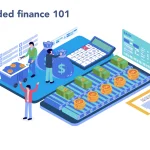
Student loan debt can be overwhelming, yet there are strategies available that can help speed up repayment of loans faster.
As an alternative, make a lump-sum interest payment before your loan’s grace or deferment period ends to avoid capitalization and refinancing or consolidating multiple loans to lower the interest rates.
Pay More Than the Minimum
Extra payments toward student loan debts can pay huge dividends financially. Not only will faster payoff save on interest charges but it can free up funds for more important goals such as home down payments.
Make an extra payment toward your student loans each month or when you receive windfall money such as a tax refund or work bonus. Be sure to specify that any extra payments go directly towards the principal balance; many providers automatically apply them towards next month’s bill, which may not be optimal.
Income-driven repayment plans like SAVE offer the fastest path to payoff of student loans. Their repayment schedule caps payments at 10% of monthly income and counts them towards loan forgiveness; further information and related plans can be found at ED’s website – you can even use their loan simulator tool to try different scenarios!
Make Biweekly Payments
Borrowers looking to save money and speed up repayment can cut their monthly payment in half and make biweekly payments instead of the standard 12. This results in 26 half payments annually as opposed to 12. Since most people get paid bi-weekly (with two months in which they receive three checks), this makes it easy for borrowers to sneak an extra loan payment each year without scrimping for extra funds.
As soon as you’ve secured financing, check with your lender or loan servicer to set up biweekly automatic payments, which can make life simpler financially. If they don’t provide this feature, manually make two payments every other month: this extra amount could help speed up loan paydown and boost your debt-to-income ratio – something lenders use as criteria when determining creditworthiness.
Refinance or Consolidate
Graduates who are struggling to repay multiple loans at different interest rates might consider refinancing or consolidating them to save on monthly payments and reduce total spending over time. Refinancing requires taking out a new loan with different terms, such as different interest rate or even lender; using a student budget calculator will allow you to see what your repayment options would look like prior to making your decision on refinancing.
Direct Consolidation Loans offered by the federal government consolidate your loans into one single payment and repayment period. However, it’s important to remember that consolidation converts your loans from federal loans into private ones and removes many borrower protections such as income-driven repayment plans and pathways to loan forgiveness.
Consolidation increases unpaid interest capitalization rates, adding it to your principal balance and forcing you to pay interest on an increased sum. Refinancing federal student loans could prove risky if you might qualify for public service or economic hardship forgiveness programs in the future.
Utilize Windfalls Wisely
If you find yourself with an unexpected windfall–say a bonus at work or tax refund–using that money to reduce student debt repayment time and interest payments is an excellent strategy. Doing so could save thousands in interest payments.
Saving money to reduce debt may also qualify you for public service loan forgiveness programs that could substantially lower your overall debt load.
Investment accounts could provide a good return over the long-term, as this strategy helps you reach your debt-free goal sooner.
Some individuals prefer paying off smaller loans first–the snowball method–for psychological relief; others may prefer taking an avalanche approach and eliminating those with the highest-interest rates first (avalanche approach). Use a student loan prepayment calculator to determine which option makes more financial sense for you.






